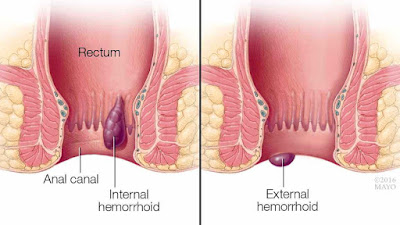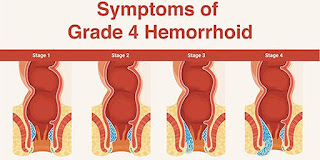PILES TREATMENT
PILES HEMORRHOIDS
Hemorrhoids are clumps of dilated (enlarged) blood vessels in the anus and lower rectum. The rectum is the last area of the large intestine before it exits to the anus. The anus is the end of the digestive tract where feces leaves the body.
Sometimes hemorrhoids swell when the veins enlarge and their walls become stretched, thin, and irritated by passing stool.
What Are Hemorrhoids?
Hemorrhoids are clumps of dilated (enlarged) blood vessels in the anus and lower rectum. The rectum is the last area of the large intestine before it exits to the anus. The anus is the end of the digestive tract where feces leaves the body.
Sometimes hemorrhoids swell when the veins enlarge and their walls become stretched, thin, and irritated by passing stool. Hemorrhoids are classified into two general categories:
- internal, originating in the rectum, and
- external, originating in the anus.
Hemorrhoids (also termed piles) have caused pain and irritation throughout human history. The word comes from Greek, “haimorrhoides,” meaning veins that are liable to discharge blood. If you've had a bout of hemorrhoid pain, you're not alone. It's estimated that three out of every four people will have hemorrhoids at some point in their lives. Even Napoleon suffered from hemorrhoids, which distracted him with severe pain during his defeat at Waterloo.
Enlarged Hemorrhoid Symptoms
Enlarged hemorrhoids are associated with symptoms such as
- itching,
- mucus discharge,
- burning at the anus,
- severe pain,
- a sensation that the bowel is not really empty, and
- bleeding without pain.
Internal Hemorrhoids
Internal hemorrhoids sit in the inside lining of the rectum and are not obvious unless they are substantially enlarged, in which case they can be felt. Internal hemorrhoids are usually painless and become apparent because they cause rectal bleeding with a bowel movement.
Sometimes internal hemorrhoids prolapse or protrude outside the anus. If so, you may be able to see or feel them as moist pads of skin that are pinker than the surrounding area. These fallen hemorrhoids may hurt because the anus is dense with pain-sensing nerves. Such slipped hemorrhoids usually recede into the rectum on their own. If they don't, they can be gently pushed back into place.
External Hemorrhoids
External hemorrhoids are located underneath the skin that surrounds the anus, and are lower than internal hemorrhoids. They can be felt when they swell, and may cause
- itching,
- pain, or
- bleeding with a bowel movement.
If an external hemorrhoid prolapses to the outside (usually in the course of passing a stool), you can see and feel it.
Blood clots sometimes form within this type of fallen hemorrhoid, which can cause an extremely painful condition called a thrombosis. If a hemorrhoid becomes thrombosed, it can look rather frightening, turning purple or blue, and could possibly bleed.
Despite their appearance, thrombosed hemorrhoids usually are not serious, though they can be very painful. They will resolve on their own in a couple of weeks. If the pain is unbearable, your doctor usually can remove the blood clot from the thrombosed hemorrhoid, which stops the pain.
Hemorrhoids occur in almost everyone, and an estimated 75% of people will experience enlarged hemorrhoids at some point. However only about 4% will go to a doctor because of hemorrhoid problems. Hemorrhoids that cause problems are found equally in men and women, and their prevalence peaks between 45 and 65 years of age.
What Causes Hemorrhoids?
Hemorrhoids are caused by swelling in the anal or rectal veins. This makes them susceptible to irritation.
This swelling can be caused by several things, including
- obesity,
- pregnancy,
- standing or sitting for long periods,
- straining on the toilet,
- chronic constipation or diarrhea,
- eating a low-fiber diet,
- coughing,
- sneezing,
Painless Bleeding
The most common hemorrhoids symptom is painless bleeding. A hemorrhoid sufferer may notice bright red blood on the outside of the stools, on the toilet paper, or dripping into the toilet.
The bleeding usually resolves itself without treatment. Nevertheless, rectal bleeding with a bowel movement is never normal and should prompt a visit to a health care professional. While hemorrhoids are the most common cause of bleeding with a bowel movement, there may be other reasons for bleeding, including the following examples:
- inflammatory bowel disease,
- blood clotting problems,
- fistulas and/or fissures (abnormal passages between a hollow organ and body surface)
- infection, and
- tumors.
- First-degree hemorrhoids: Hemorrhoids that bleed, but do not prolapse. These are slightly enlarged hemorrhoids, but they do not protrude outside the anus.
- Second-degree hemorrhoids: Hemorrhoids that prolapse and retract on their own (with or without bleeding). These may come out of the anus during certain activities like passing stool, and then return back inside the body.
- Third-degree hemorrhoids: Hemorrhoids that prolapse and must be pushed back in by a finger.
- Fourth-degree hemorrhoids: Hemorrhoids that prolapse and cannot be pushed back in the anal canal. Fourth-degree hemorrhoids also include hemorrhoids that are thrombosed (containing blood clots) or that pull much of the lining of the rectum through the anus.
1....ALOE VERA GEL:
Reduce the inflammation and swelling.
Soften faeces and moisturize the intestines.
Relieve the irritations and itching.
2...FIELDS OF GREENS
Adding fibre to your diet will help clean out the gastrointestinal tract, facilitate bowel movement, hence preventing constipation and allowing the colon to work efficiently.
3....ALOE PROPOLIS CREME
Applying Aloe Propolis Cream directly on the hemorrhoids will help reduce inflammation pain and it is a natural antibiotic which will help prevent and treat any potential infection.
4....ALOE LIPS
Aloe lip contains most powerful ingredients for absorbing the blood formed in the veins (external use only) , it also shrinks the size and bring make the surface as flat as the body used to be.







Comments
Post a Comment